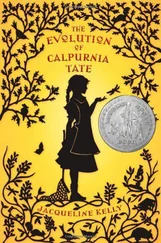So far, we have spoken about culture. This is the part of reality with which history is concerned, but it is only part of the whole picture that historians must examine. The rest of this picture is made up of the persons whose activities created the culture. It must always be remembered that culture is the consequence of persons seeking to realize their potentialities sufficiently to satisfy their inner drives. Without human beings there would be no culture. It is equally true that without culture there would be no humans (but only animals, in direct contact with their natural environment). The whole combination of human beings plus their culture we call by various names such as societies, social groups, or even civilizations. These terms have different meanings that we shall examine in a moment. Before we do, we should sum up the stage we have reached in our discussion.
We could write our last conclusion as an equation, thus:
society = humans + culture
The society is surrounded by its natural environment to which it adapts itself by changes in its culture. Thus the whole relationship might be represented by a diagram:

The rigid lines between these concentric circles (like the plus mark in the equation just given) are misleading, because culture is not rigidly separated from the human beings on the one hand and from the environment on the other. Rather it penetrates into both. In fact, much of culture is inside human beings because it takes the form of trained neurological reactions, developed muscles, emotional reactions, ideas both clear and vague, and the established patterns of acting that make the difference between human personality and human nature. Human personality is the part of culture that is inside human beings and can be observed. Also inside human beings, but beyond the limits of our observation, is human nature. Such human nature is made up of potentialities and the drive (or drives) to express these. What these potentialities or drives are we cannot know from observation but only from inferences based on our observations of personality.
In addition to personality (which is inside human beings), culture has manifestations outside human beings. This external culture consists of networks of human relationships, of concrete tools and instruments (called artifacts), and of symbols for communication or expression.
In order to develop their potentialities so that human personalities emerge from latent human nature, human beings establish relationships with one another. As the child develops, these relationships are extended from such fundamental relationships as those with mother and nurse to those with parents, siblings, and teachers, to those with friends, with the opposite sex, with business relations, with representatives of the government (like the police, the tax collector, and the draftboard), and with one's fellow citizens and fellow soldiers. All these relationships, as part of culture, form groups of human beings. Of these groups there are many different kinds. We shall distinguish four different kinds at this point: (1) social groups, (2) societies, (3) producing societies, and (4) civilizations. All are made up of aggregates of human beings with their personalities and external culture.
3. Groups, Societies, and Civilizations
The social sciences are usually concerned with groups of persons rather than with individual persons. The behavior of individuals, being free, is unpredictable. There is more hope of success when we deal with the activities of aggregates of persons because in such aggregates the unpredictable behaviors of individuals tend to cancel each other out and become submerged in the behavior of the group as a whole. While the behavior of such a group may not be predictable, it is less free to change and can, accordingly, be extrapolated in a way that individual behavior does not allow. The same situation exists in the physical sciences, where we are quite unable to predict the behavior of any individual molecule or particle, but can, with assurance, predict the changes that take place in any large aggregate of molecules. These relationships, in the physical sciences, can be stated in the form of "laws" concerning the pressure, volume, size, state, and temperature of aggregates of molecules.
With aggregates of persons we can state no laws comparable to those found in the physical sciences, although we can point out tendencies. For example, if an aggregate of persons in a stable group undergoes a rise in standards of living we can expect a tendency toward an increase in population for the group as a whole, even when we cannot say of any individual in the group that he will have more children or even any children at all. Moreover, we can study the nature and distribution of the increased supply of wealth to determine its effects on the numbers of children in various subgroups within the main group. But in the social sciences, where we must be satisfied with tendencies rather than with laws, we can analyze the working out of such influences and tendencies only if we have a fairly clear idea of the nature and structure of the social groupings involved. This is quite different from the natural sciences where laws about the behavior of aggregates could be made long before men had any clear idea of how such aggregates were made up.
The statement that we can enunciate rules of social tendencies only if we have fairly clear ideas about the nature of social groupings makes it necessary for us to confess that the nature of groupsis one of the matters on which there has been wide disagreement in the past. In general men's ideas on this subject could be placed in three classes: (1) those who believed that social groups were merely collections; (2) those who believed that social groups were organisms; and (3) those who denied that social groups were either collections or organisms but argued that they were sui generis, a particular kind of aggregate of their own. The distinctions between these three points of view on the nature of social aggregates could be expressed roughly as follows. A collection is no more than the sum of its parts, and the parts are interchangeable within the collection. An organism is more than the sum of its parts (since they have patterns of relationships), and the parts, being fitted to their position and role in the whole, are not interchangeable. The third class, made up of those who maintain that a social group is sui generis, occupy a middle ground between the " collectionists"and the "organicists"since they say that the whole is more than the sum of its parts but that the parts (that is, the individuals in the group) are interchangeable in their functions and positions.
A discussion such as this about the nature of social groups may seem to be a merely academic dispute of little practical significance, but, as a matter of fact, it has been profoundly significant throughout human history. Those who have seen human groups as organisms, from the ancient Greeks to Hitler, have derived from this point of view certain corollaries about the relations of the individual to the group that have been destructive of individualism and of human liberties. For in an organism the parts exist for the sake of the whole and are subordinate to it; they must be sacrificed if necessary for the welfare of the whole. Thus Aristotle says that a man cannot live apart from the state, as an animal could or a god could, because a man cut off from the state is like a thumb cut off from a hand: it is no longer a thumb but merely looks like a thumb. In saying this, he is using an organic analogy which explains the totalitarian character of the Greek polis or of the later Roman imperium. Both were as prepared to sacrifice the individual to the state as we would be to cut off a cancerous thumb in order to save the whole organism.
Читать дальше











